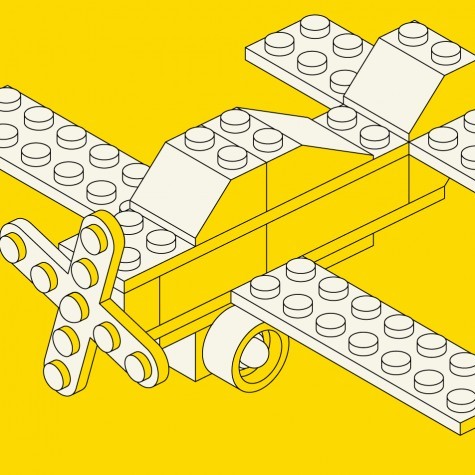We grow by sharing our experience, knowledge and expertise/

Is remarketing the light at the end of your sales funnel?
Is remarketing the light at the end of your sales funnel?
Quick. Tell me the brand colors of the last website you visited.
Good job. Now tell me the slogan.
Ok, maybe you can’t remember the slogan. And that’s fine. If you’re like the rest of the digital world, you spend more than six hours of your day online. If you remembered it all in granular detail, you’d lose your mind.
For the moment, let’s just zoom in on a single landing page you spent some time on today. Let’s imagine that it was advertising 25% off your favorite multivitamins.
Statistics say you spent no more than 15 seconds interacting with the landing page, and that you didn’t order right away. The content simply grabbed your attention.
What happens next?
Your digital life is a blizzard of special offers, updates, and brand stories. What are the chances you’d actually remember to revisit that landing page and click on the deal without a reminder?
Or, to put this into terms any CMO can understand, if that ad was yours, would your lead magically become your next customer?
If you know anything about the evolution of the marketing funnel, you’d know that’s not the way buyer journeys work.
What’s a marketing funnel?
As jargony and abstract as the concept of a marketing funnel may sound at times—especially when you hear it a hundred times a day—it’s anything but.
At its most basic, your marketing funnel is the processes and tools you set up to guide your potential customers through their journey from awareness to purchase, aka your buyer journey.
Marketing, or purchase, funnels aren’t new. In fact, they’ve been around since 1924, when proto-marketing guru William W. Townsend updated the classic AIDA model to fit the needs of modern advertising. Townsend’s model worked like this.
First, you get on your potential customer’s radar (awareness). Then you get them curious (interest). Then you show them why your solution will solve their problem better than anything else on the market (decision). Finally, if you nail steps one through three, you have a new customer (sales).
If you drew a picture of it, the buyer journey we just described might look something like a funnel, i.e. a bunch of leads come in at the top, but only a few trickle out the bottom as new customers.
As McKinsey sales and marketing leader David C. Edelman pointed out back in 2010, the straight path from awareness to purchase worked great for decades. Remember how we used to buy cars before the internet? We did our research on the car lot and sealed the deal after talking to a salesman. Unless we bought a lemon, we might remain loyal to our manufacturer, and even our dealership, for years.
That was the way it used to work.
How the buyer journey has evolved into the customer decision journey (and what that means for your marketing funnel)
In the ten or so years since Edelman published his article, the buyer journey has shifted seismically. Consumers are interacting with more touch points more often, and those touch points aren’t necessarily the ones we’ve traditionally prioritized.
Think, for example, of how much more money we invest today in owned and earned media (i.e. websites and social)—and in the people and tech to produce and deploy all that content—than we did in the past with straight, one-way paid media. This is because the “funnel” itself has become more nuanced.
Ideas like customer enjoyment, bonding, loyalty and even advocacy have extended the buyer journey. Customers aren’t just buying products and services today, they’re reviewing them. Not only that, they’ve upended AIDA’s static decision-making stage by continuing to research the products and brands they’ve invested in even after making their purchases.
Companies that have rethought their buyer journeys are walking, talking advertisements for the new model. They’ve proven that investing just a little in holding onto customers you already have (customer retention) can nearly double your profits, and that reading a good review (advocacy) turns leads into customers over 90% of the time.
The upshot?
While loyalty to brand promises and brand value are still incredibly important metrics of customer experience, you can’t control the information your potential customers use to make their decisions anymore, and you can’t convince them with a handshake.
But you can see how your customers are interacting with your media channels, pretty much at every touch point, and adjust your budget accordingly.
More importantly, you have a bunch of new, wildly effective touch points at your disposal.
If we return to our original premise—the 15 seconds you spent considering a special offer for your favorite multivitamins—we left off saying that, statistically speaking, just seeing the ad wasn’t enough to make you click on the deal.
The question is now: what would make you click?
What is remarketing and does it really work?
Here’s the short answer. Remarketing is when you serve a paid ad to a lead after they’ve already interacted with your brand on your website or app. As you’ve probably guessed, you do that via cookies. (At least for the time being.)
Here’s how it works.
Take that deal on your favorite multivitamins, the one you didn’t respond to initially. Imagine you were scrolling through your news feed later that night and saw another ad for the same deal on those vitamins?
Do you think you’d be more likely to buy this time?
The data says yes.
That’s remarketing in a nutshell.
You can remarket via another website (display remarketing). You can do it via Google searches (search remarketing). You can do it on social media platforms like Facebook. You can even do it on your own website by serving the right content to repeat visitors.
Depending on your budget and goals, you can run your remarketing campaigns on a CPC (cost per click), CPM (cost per impression) or even CPA (cost per acquisition) basis.
What are the benefits of remarketing?
Cost-efficient
Ever tried to give away a chicken liver sandwich to a bunch of kids at the park. Me neither. Because kids hate chicken liver.
But if you tossed a Snickers bar into that same crowd, you know exactly what would happen. Twelve hands would shoot up at once. That’s because you’re offering them something you know they want, which makes it a lot easier to gauge their intent.
That’s exactly how remarketing ads work, and exactly why they save you money.
You aren’t blindly feeding random strangers content about things they may or may not be interested in. You’re zeroing in on the very leads that have already interacted with your products or services and shown intent to purchase.
Improves brand recall
Some brands are effortlessly noticeable. The problem is, we can’t think of any off the top of our heads. And your next customers can’t either. Brands that stand out work hard to do it.
Remarketing ads are quiet brand workhorses: they remind potential customers that your brand exists. Even if you don’t land a conversion the first time around, you’re getting seen by a key segment of your audience: the visitors who already noticed you.
Maximizes conversions
Purchases can get complex these days, especially when customers are committing to a service, subscription or otherwise. You shouldn’t expect your leads to buy right away, anymore than Toyota expects spur-of-the-moment car purchases.
Remarketing will make sure your website—your primary owned media channel—is doing what it’s supposed to: capturing your best leads so they don’t escape your funnel and drift off to a competitor.
Reaches the right audience
Imagine you’re at the supermarket and an IPA catches your eye. Imagine you pick it up for a second and put it back on the shelf, for whatever reason. Maybe it’s a little too expensive. Maybe you just feel safer sticking with your go-to beer.
Now imagine you’re standing in line and a shelf of that very beer appears before you along with a company rep, who hands you a two-for-one coupon.
That’s, pretty literally, the advantage remarketing ads give you.
They let you finetune your ads down to the specific content (website page or even section) your visitors interacted with and the buttons or links they clicked. When those visitors search for similar products, use similar terms in their Google searches, or are just surfing the web, they’ll see the content that originally piqued their interest again.
What platform should I use for my remarketing ads?
There are quite a few online marketing platforms out there that you can integrate into your funnel to help with your remarketing strategy. Some of them, like Adform and Adroll, have invested in polished user experiences. Others, like Facebook, Google Ads, and the enterprise-level Google Marketing Platform, are constantly evolving and often leave inexperienced users scratching their heads from the get-go.
All of them, however, will give you an incredible amount of control and insight into your audience behaviors at every stage of the buyer journey—if you know how to use them.
Which is the issue, in a nutshell. Online marketing platforms can give you so much data, and offer so many ways to use it, that they can leave businesses, and even marketing teams, feeling overwhelmed.
Which is not what you want, especially when these are services you’re paying for.
The good news? With a little help from full-stack marketing experts, you can take your remarketing game to the next level, reaching the right people faster on budgets you can afford.
The take-away
The routes our leads take to become customers have changed a lot in the past 10 years. We’ve had to re-engineer the infrastructure of our marketing funnels accordingly.
Traditional buyer journeys have shifted into more complex customer decision journeys where we need to pay attention to after-sales and extra-sales touch points like reviews and even social media conversations. We’re also rethinking our media spend in terms not only of paid media but also owned and earned media.
Whether this is a new conversation for you or you obsess about it daily, remarketing is a pretty straightforward tool businesses of all sizes should add to their marketing funnels.
Remarketing is cost-efficient, it’s effective, and with all the amazing benefits of machine learning on its side, it will only be getting better at reaching the right leads at the right time.

Customer-centric marketing: Why you need to start paying more attention to what your customers want
READ MORE



